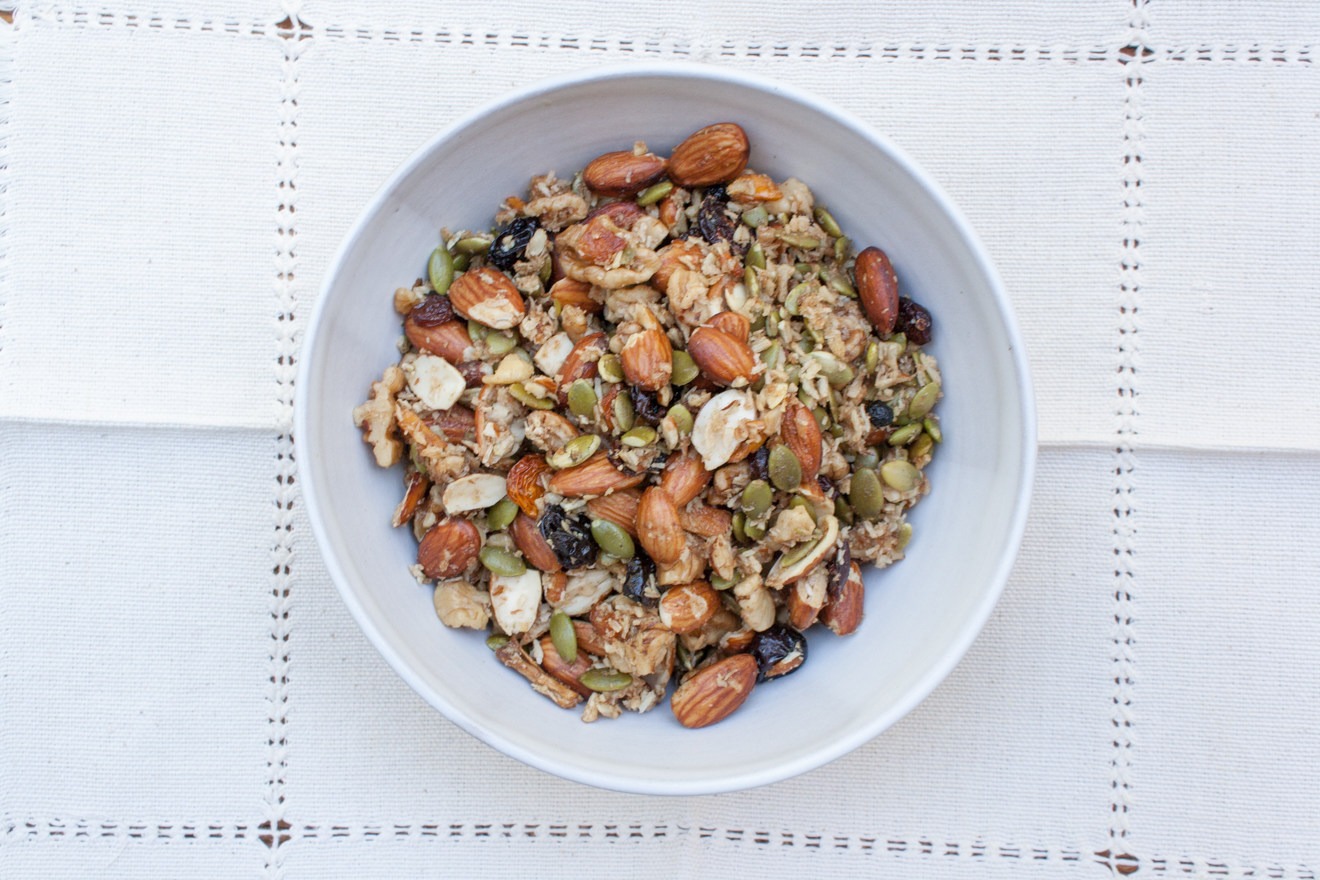You are here
When traveling through long days in the backcountry, making up the calories you burn can be challenging. This caloric deficit can be detrimental to your trip and to your ability to recover. However, especially when you are trying to stay lightweight, having enough calories on hand can become a challenge, and keeping those calories nutritious can be even more difficult.
What do I mean by nutritious? I mean foods that give you the macro and micro nutrients that you need to survive.
Macronutrients refer to the basic components of your diet: carbohydrates, fats, and proteins. It is essential at home and in the backcountry that you have a balance of these three food groups. What that balance is depends on you as an individual and your activity level. There is no single right way to break up macronutrients, and different ratios work for different people.
Micronutrients refer to the vitamins and minerals that our bodies need to function and to prevent disease. These are the nutrients that are all too lacking in the processed foods that have become the gold standard of calorie replacement in the backcountry. Sticking to a whole food diet with a variety of food sources will help you to get the micronutrients that you need.
Fats
Let’s talk about what the 1980s and 1990s did to our thoughts about fats. Remember when you learned all about that food pyramid? These old recommendations instilled a very deep fear of fat in our society. It’s time to get over that. I work as a nurse practicioner, and every day at work I have a conversation with patients about re-introducing good fats to their diet. Every time, their jaws drop to the floor in disbelief. Fat is essential to our bodies. Remember when margarine was all the rage? Good news folks, butter is back!
Alright, I’ll cut to the chase here and break down a list of foods I bring into the backcountry that are high in calories but still pack the micronutrients that your body needs. There are, of course, many more options than what I list, but I’ll give you some of my favorites.
What do I mean when I say good fats? To put it simply, I mean fats that have not been processed into toxins that are foreign to our body. Dr. Cate Shanahan goes into much greater detail and has created this chart to break it down.
These are my favorite fats to bring into the backcountry:
- SEEDS and NUTS
- Raw, activated seeds and nuts (activated nuts break down the nutrients to improve digestibility and nutrient absorption)
- Seed and nut butters
- Check out Trail Butter if you haven’t already
- OILS
- Buy a travel size toiletry bottle and fill it with your favorite good oil from the chart above. I usually put this in an extra plastic bag to avoid spillage
- You can buy coconut oil and olive oil in single serve packets and mix them in with any meals
- AVOCADO
- Enough said… usually consumed in the first couple of days
- FISH
- CHEESE
- Hard cheeses tend to be better tolerated for those with lactose sensitivities and last better without refrigeration
Proteins
Less myth busting information here, but protein is essential for muscle building and recovery.
Here are my favorite backcountry proteins:
- FISH
- see above, under "fats"
- MEAT
- Dehydrated chicken. DIY
- Jerky. DIY or store-bought
- LEGUMES (cook and dehydrate for quick and easy camp cooking)
- Lentils
- Black beans
- Chickpeas
- Curry roasted chickpeas
- NUTS and SEEDS
- see above, under "FATS"
- CHEESE
- see above, under "FATS"
- EGGS
- Hard boiled for your first one to two days depending on temperature
- Freeze dried
- COMPLETE PROTEIN GRAINS
- Quinoa
- Buckwheat
Carbohydates
Again, pick the non-processed options here and remember that starchy vegetables are a great source of carbs too...
- VEGETABLES (to dehydrate starchy veggies for the backcountry, follow these guidelines)
- Sweet potato
- Potato
- Squash
- Beets
- Carrots
- Peas
- FRUIT
- Berries
- Dates
- Banana
- Apple
- Mango
- Raisins
- WHOLE GRAINS
- Quinoa
- Brown rice
- Brown rice noodles
- Buckwheat
- Oats
Vegetables
Vegetables are not quite high calorie foods, but they are worth mentioning because of their micronutrients and fiber value. Veggies are also probably the most difficult category of foods to tote around the backcountry. Especially for people who eat a high veggie diet in the front country, switching to a backcountry diet of processed foods can leaving you feeling tired and create digestive issues.
Here are my favorite ways to include vegetables in the backcountry:
- Dehydrated vegetables - DIY
- Freeze dried vegetables - store bought
- Green powder
- Tomato sauce
- Carrot sticks
Bring it all together and you get...
Here are some of my favorite calorie-boosting recipes that combine all the macronutrients with added micronutrients:
- Snacks:
- Breakfast:
- Dinner:
This post was created in collaboration with The Wholesome Trail, a blog with a focus on backcountry recipes and wellness tips for the outdoor adventurer.





Comments
Sign In and share them.